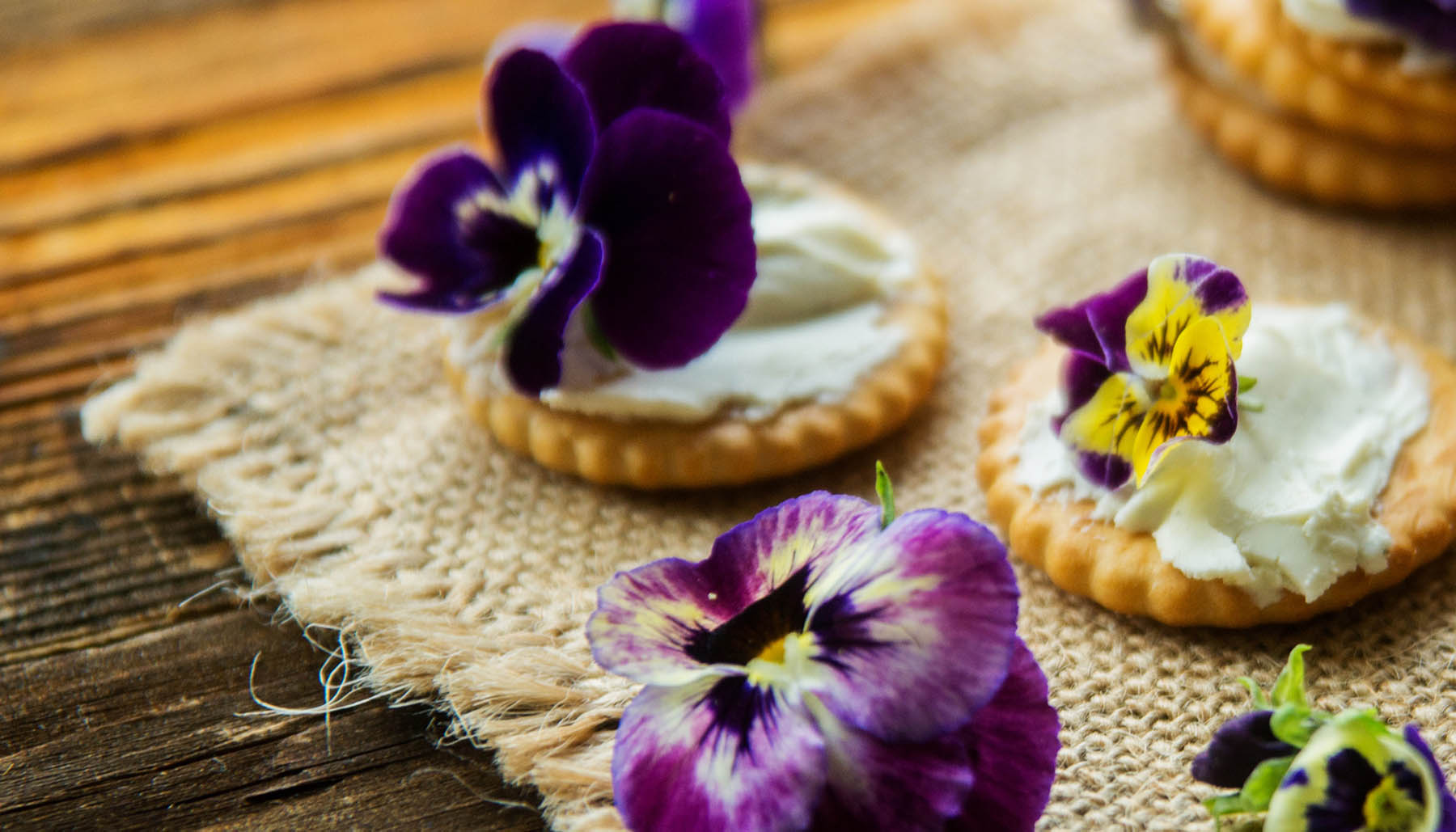Let them eat… flowers? Edible blooms can enhance ordinary salads, add surprising flavor to sweets, and garnish cocktails. Some of them can be dried and used in herbal teas or seasoning blends, too.
If ordinary vegetables are a little too pedestrian for your taste, why not shake things up and grow edible flowers? A word of caution, however: Don’t start plucking any old flower to munch on! Only consume flowers that are 100% edible, grown without pesticides, and prepared correctly.
Nasturtium
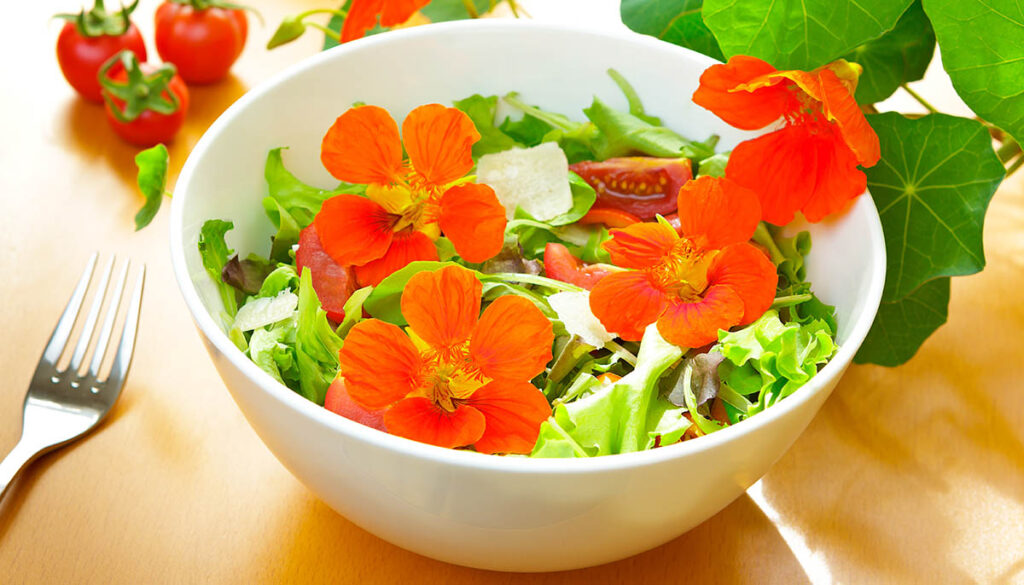
These bold blooms don’t just look nice–they taste surprisingly good, too! Nasturtium flowers have a spicy flavor similar to pepper. While it’s most common to use these flowers as a garnish, they can also be stuffed with fillings for unique canapes. In addition to eating the flowers, you can also consume the leaves and even pickle the seed pods to use in place of capers in recipes.
Squash Blossom
Trendy foodies discovered the wonder of squash blossoms relatively recently, but this tasty treat is nothing new. Zucchini flowers are most commonly eaten fried, either simply dipped in batter or filled first. Given the choice, we’re obviously going to opt for cheese filling–a mixture of goat cheese and herbs is amazing in fried squash blossoms. You can also try cutting the flowers into ribbons and serving them over pasta or salad. And in Mexico, where squash blossoms are a common ingredient, they are mixed with cheese and peppers for quesadilla filling.
Marigold
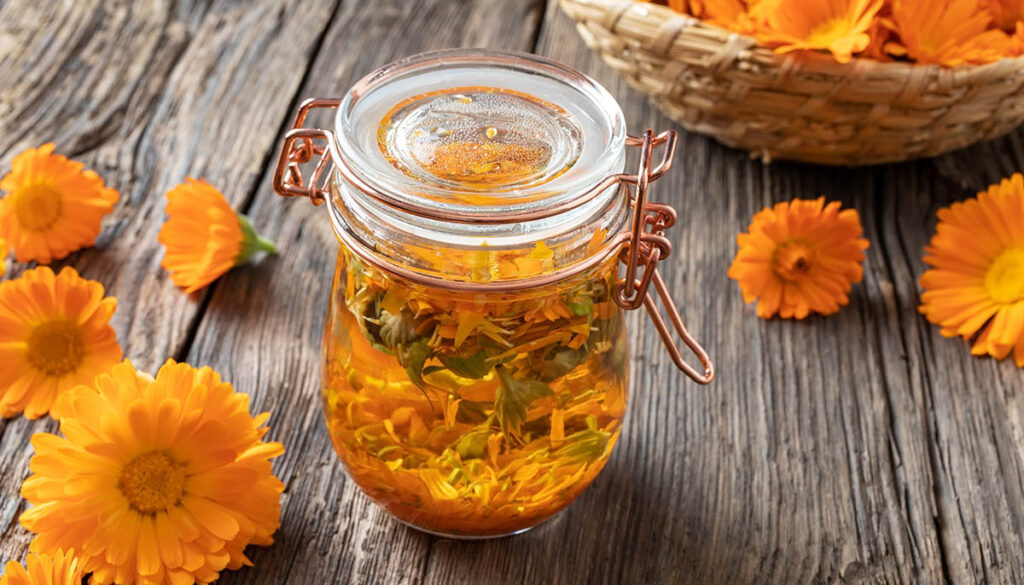
The petals of the marigold, or calendula flower, are known as “poor man’s saffron” because of their flavor and color. A sprinkling of marigold petals can dress up a simple dish. They’re especially nice in an otherwise boring-looking side dish, such as rice, because of the color the flowers add. You can also make homemade calendula salve by steeping the dried blossoms in a carrier oil and then combining it with beeswax.
Sunflowers
Okay, I know what you’re thinking. Of course sunflowers are edible–the seeds are an incredibly popular snack. But I’m not talking about the seeds; I’m talking about eating the whole flower! Sunflower buds, harvested just before the flower opens, can be prepared just like artichokes. If you plant sunflowers this summer, give it a try. You can always let the rest of your crop bloom as usual after sampling this unique delicacy.
Garlic
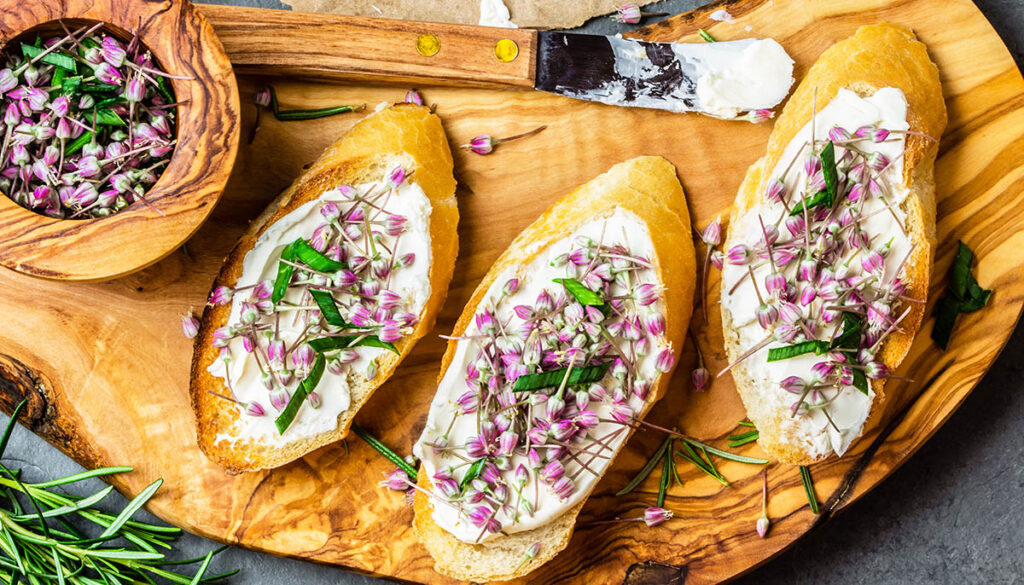
Did you know that garlic produces flowers? In fact, all alliums–that’s chives, garlic, leeks, ramps, and shallots, to name a few–produce edible flowers. While garlic scapes are a trendy ingredient in farm-to-table dining, you don’t find garlic blossoms on the menu as often. That’s a shame because the flowers have a delicate garlickly flavor and a lovely pale purple hue. Chive blossoms are also great in salads or cold soups.
Violas
Perhaps the most commonplace edible flower is the viola, also called a Johnny jump up. They’re easy to grow and come in a variety of colors–and aren’t they adorable? Smaller than the related flowers called pansies, these little blooms are wonderful in almost any cold dish. If you’re looking for something really special–and have the time for a fiddly project–violas can be candied by brushing them with egg whites, dipping them in sugar, and then allowing the blooms to dry.
Borage
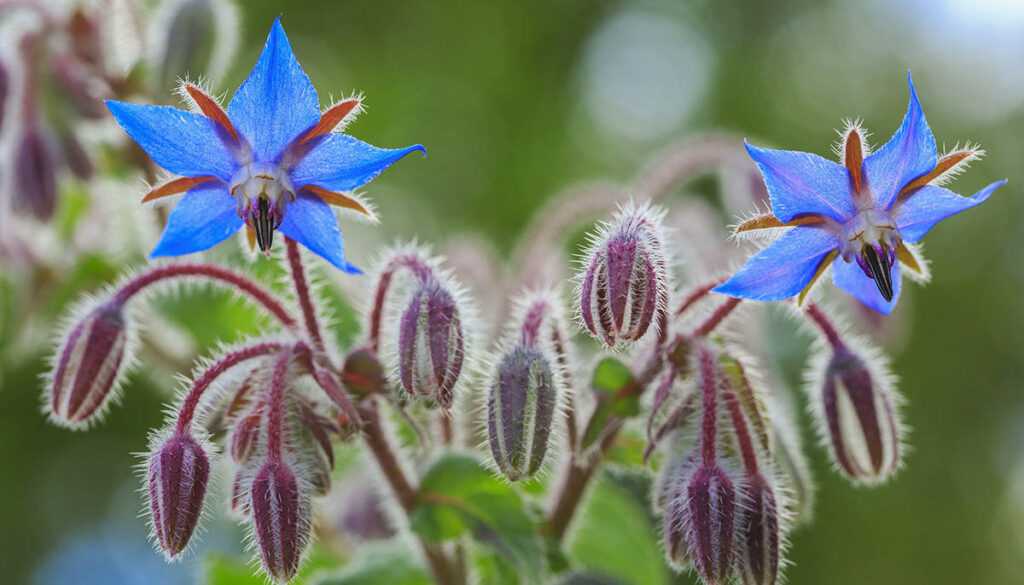
This old-fashioned plant won’t be found in modern cookbooks, but you shouldn’t overlook its unique flavor. Borage produces blue, star-shaped flowers. And, weirdly enough, they taste like cucumber! The pretty flowers are especially good as garnishes for summer cocktails or citrus-flavored desserts.


